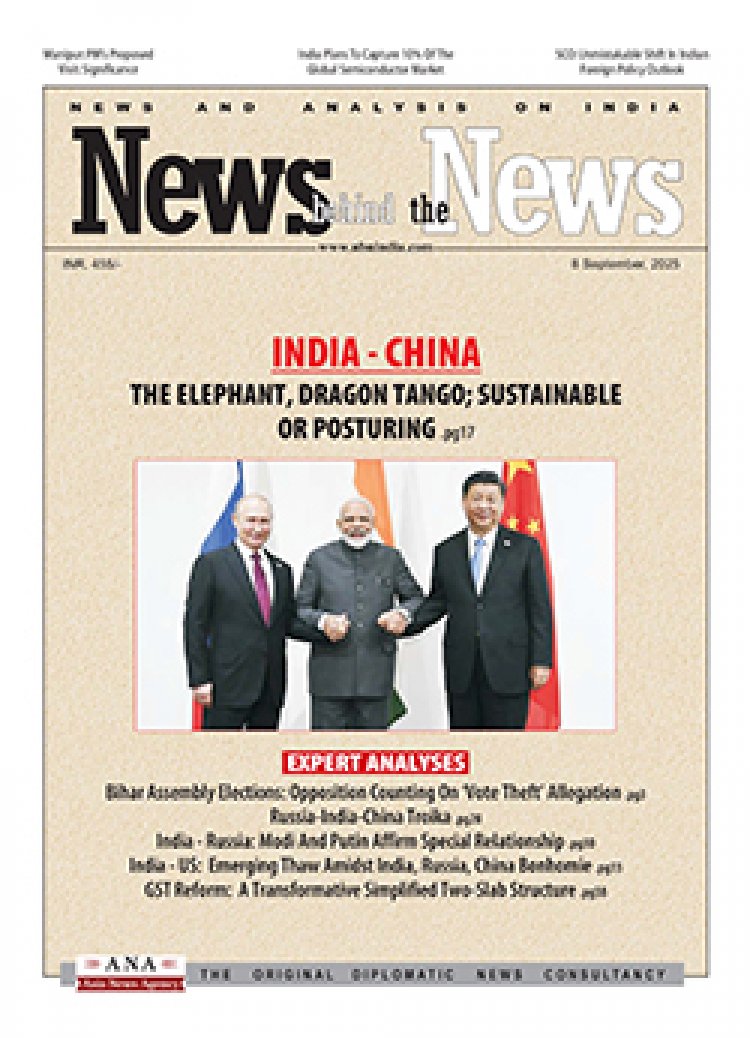Explaining the Stock Market Bull Run
STORIES, ANALYSES, EXPERT VIEWS

A statistics that is indicative of the changes in the Indian economy, notes Ishan Bakshi (writes on trending topics and opinions at Indian Express) is that the “number of stock market investors is now inching closer to the number of land-owning farmers in the country……In certain pockets, stocks have been trading at multiples that seem difficult to justify. It took a conflict between Iran and Israel, and the threat of it escalating, to take some of the sheen off the markets.”
High price-to-earnings (PE) ratio: In April, the BSE Sensex traded at a price-to-earnings (PE) ratio of 25. In comparison, the PE ratio averaged 18.61 between 2003-04 and 2007-08 and 23.81 between 2014-15 and 2023-24.
Exuberance in small- and mid-cap segments: In the case of the small- and mid-cap segments, “the exuberance has been even more euphoric….. despite the fact that several small- and mid-cap funds had restricted fresh inflows, indicating their inability to allocate funds efficiently…” This states Bakshi “suggests that stock prices may not be anchored in fundamentals.”
Exuberance backed by Indian economy’s compelling narrative
This exuberance, “rational or irrational, is backed by an appealing narrative with several cross-cutting themes. At its core is a belief in India’s growth trajectory — the view that the political, policy and economic environment are perfectly aligned to deliver relatively high growth over a sustained period is now widely held. There are, after all, strong reasons to be optimistic about the economy’s prospects. A growth rate of 7-8 per cent — notwithstanding uncomfortable questions over its estimation, the distribution of growth or job creation — is nothing to scoff at. Nor are the medium-term growth projections by institutions such as the IMF, which only underline the robustness of the country’s growth trajectory. Strong corporate and bank balance sheets have only raised expectations that the economy is on the cusp of a private investment cycle. And then there are favourable demographics. At a time when there is uncertainty over China’s growth prospects, the Indian economy stands out. There aren’t many countries that have the ingredients for sustaining relatively high growth over a long period, and can offer opportunities at this scale.”
Indian households have been increasingly turning towards the stock markets
Besides the foreign investors, Indian households, too, have been increasingly turning towards the stock markets in their search for yield. As per reports, the total number of demat accounts in the country has recently crossed 150 million. As per NSE, the number of unique investors (based on PAN) now exceeds 90 million, which translates to upwards of 50 million families, or more than 17 per cent of all households in the country. And then there are those who invest indirectly via mutual funds. As per the Association of Mutual Funds in India’s estimates, there are now more than 40 million unique mutual fund investors.
Bakshi puts these numbers in perspective. In 2019, the total number of agricultural households in the country was pegged at 93.09 million by a survey carried out by the National Statistical Office. In 2022-23, the number of farmer beneficiaries under PM-Kisan stood at 107.3 million, while in 2023-24, it was 92.1 million (as of January 2024). In 2022-23, 74 million persons filed income tax returns (this includes individuals, firms, etc). And, as per the National Family Health Survey, 7.5 per cent of households in the country have cars.
Pan India investors: Investors, notes Bakshi, now are not just limited to the larger cities. In 2023, an SBI dividend yield fund drew applications from 70 per cent of the pin codes in the country. As per other estimates, investors now come from every nine out of 10 pin codes in the country. “One can quibble over the amounts invested by the smaller retail investors, but all this only points towards the culture of equity spreading rapidly across the country, while also indicating the growing financialisation of household savings. And the heft of these investors is growing. In 2016-17, contributions through systematic investment plans (SIPs) stood at Rs 43,921 crore. By 2023-24, they had risen more than four-and-a half times to touch Rs 1.99 lakh crore. In comparison, net investments by foreign portfolio investors last year stood at Rs 2.08 lakh crore.”
According to SEBI chairperson, stock market regulator: ‘Yes, at 22.2 (PE multiple), some people say we have an expensive market, but still why is the investment coming (in)? This is a reflection of the optimism and the trust and faith that the world has in India today that we are commanding these kinds of multiples in our markets.’
So, even as investors can be a fickle lot, presently “India remains the preferred investment destination.”















